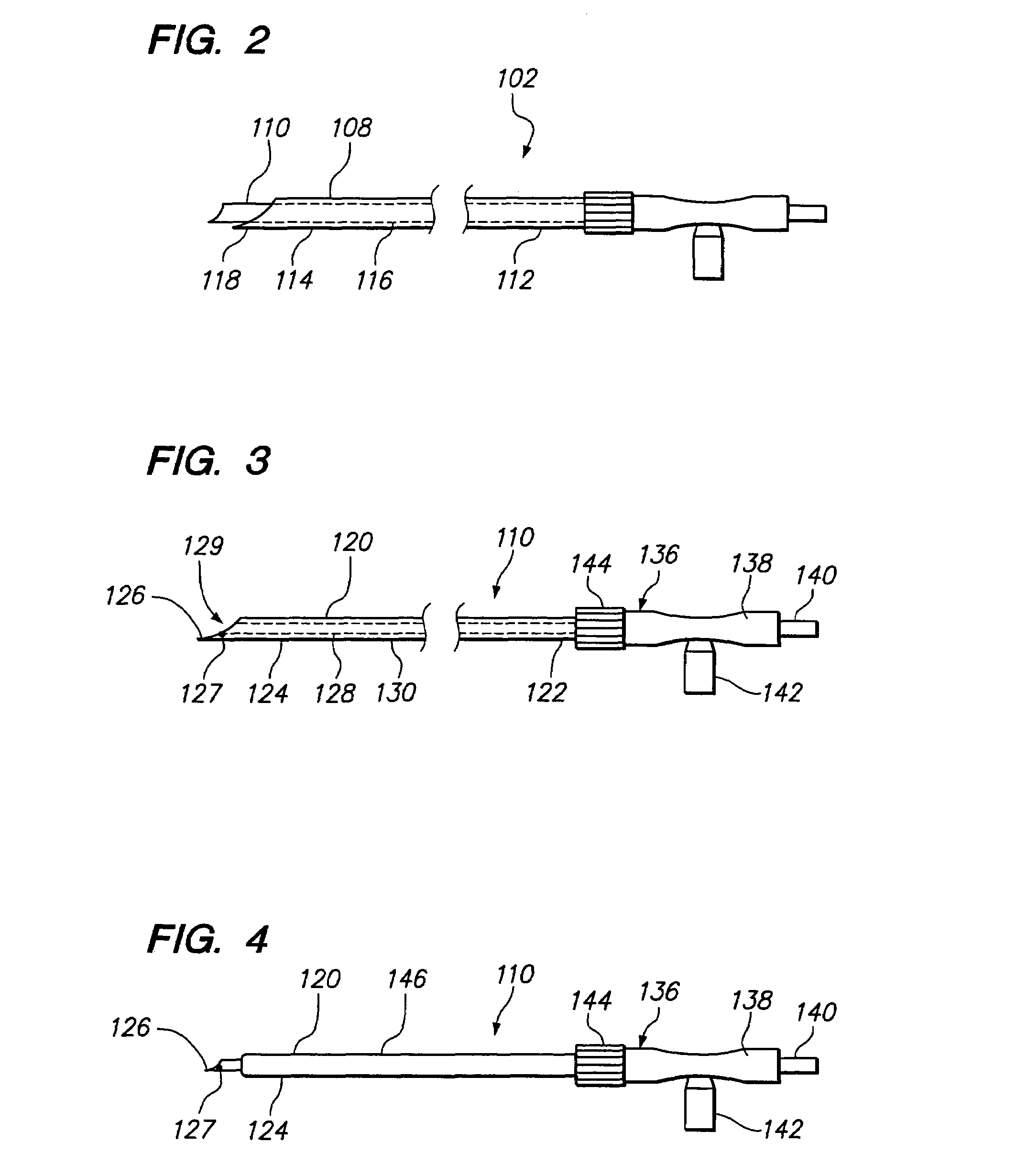Tissue treatment system and method for tissue perfusion using feedback control
a tissue treatment system and feedback control technology, applied in the field of radio frequency (rf) electrosurgical probes, can solve the problems of large size of tissue coagulation created from a single electrode, and to a lesser extent a multiple electrode array, and significant increase in treatment duration and patent discomfort, and require significant skill for meticulous precision of probe placemen
- Summary
- Abstract
- Description
- Claims
- Application Information
AI Technical Summary
Benefits of technology
Problems solved by technology
Method used
Image
Examples
Embodiment Construction
[0040]FIG. 1 illustrates a tissue treatment system 100 constructed in accordance with an exemplary embodiment of the invention(s). The tissue treatment system 100 generally comprises: a probe assembly 102 configured for introduction into the body of a patient for ablative treatment of target tissue; a radio frequency (RF) generator 104 configured for supplying RF energy to the probe assembly 102 in a controlled manner; a pump assembly 106 configured for perfusing an infusaid, such as saline, out through the probe assembly 102, so that a more efficient and effective ablation treatment is effected; and a perfusion controller 107 configured for controlling the amount and / or timing of the infusaid perfused out of the probe assembly 102.
[0041]Referring specifically now to FIG. 2, the probe assembly 102 generally comprises an ablation probe 110 and a cannula 108 through which the ablation probe 110 can be introduced. As will be described in further detail below, the cannula 108 serves to ...
PUM
 Login to View More
Login to View More Abstract
Description
Claims
Application Information
 Login to View More
Login to View More - R&D
- Intellectual Property
- Life Sciences
- Materials
- Tech Scout
- Unparalleled Data Quality
- Higher Quality Content
- 60% Fewer Hallucinations
Browse by: Latest US Patents, China's latest patents, Technical Efficacy Thesaurus, Application Domain, Technology Topic, Popular Technical Reports.
© 2025 PatSnap. All rights reserved.Legal|Privacy policy|Modern Slavery Act Transparency Statement|Sitemap|About US| Contact US: help@patsnap.com



